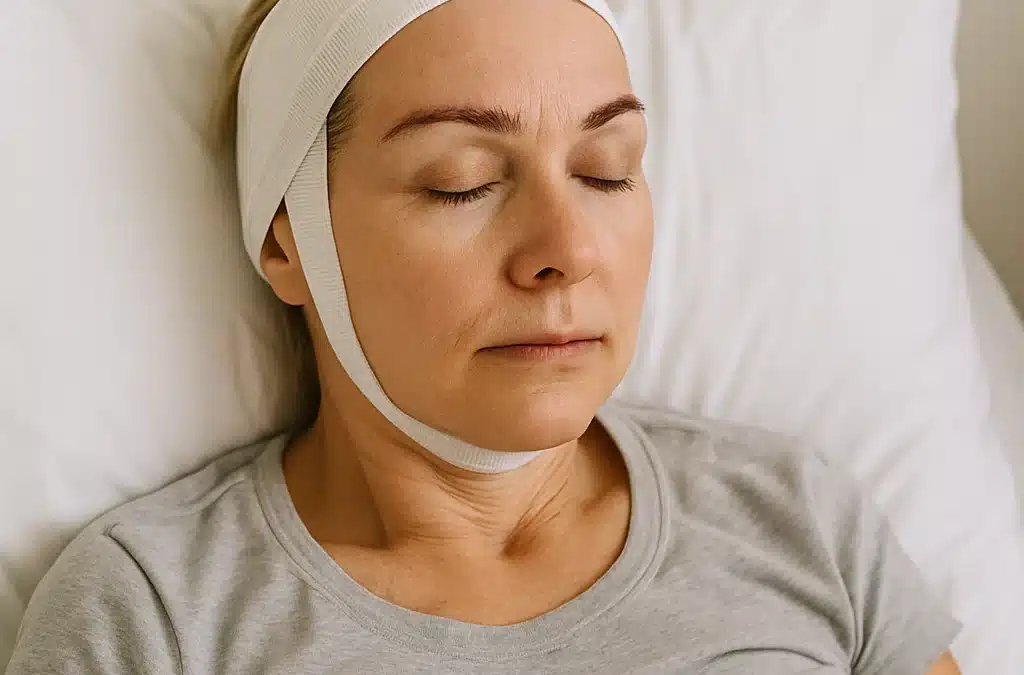A brow lift, also known as a forehead lift, is a popular cosmetic procedure designed to elevate sagging eyebrows, reduce forehead wrinkles, and restore a more youthful appearance. While the surgery itself is a crucial step, the recovery process plays an equally significant role in achieving the desired results. Understanding what to expect during recovery and following recommended aftercare tips can ensure a smooth healing process and optimal outcomes.
What to Expect During Recovery
Recovering from a brow lift is a gradual process that varies from person to person, depending on the type of procedure performed and individual healing factors. Here’s a general overview of what you can expect:
1. Immediately After Surgery
- Swelling and Bruising: Swelling and bruising around the forehead, eyes, and temples are common in the first week. These are temporary and will gradually subside.
- Dressings and Bandages: Your surgeon may place dressings or bandages to protect the incision sites and minimise swelling.
- Discomfort: Mild discomfort, tightness, or a feeling of numbness in the forehead area is normal. Pain can usually be managed with prescribed medication.
2. First Week Post-Surgery
- Rest and Recovery: You will need to rest and avoid strenuous activities. Keeping your head elevated, even while sleeping, can help reduce swelling.
- Follow-Up Appointment: A follow-up appointment is usually scheduled within the first week to monitor healing and remove any dressings or sutures.
3. Second to Fourth Week
- Healing Progress: Swelling and bruising will continue to improve, and you may start to see the initial results of your brow lift.
- Resuming Activities: Light activities can be resumed after two weeks, but it’s essential to avoid heavy lifting and vigorous exercise until your surgeon clears you.
4. Long-Term Healing
- Scarring: Incision scars will fade over time but may take several months to blend with your natural skin tone.
- Final Results: The full results of your brow lift may take three to six months to become fully apparent as swelling completely resolves.
Tips for a Smooth Healing Process
Following your surgeon’s aftercare instructions is critical for a successful recovery. Here are additional tips to help ensure a smooth healing process:
1. Manage Swelling and Bruising
- Apply cold compresses to reduce swelling in the first 48 hours after surgery.
- Avoid bending over or straining, as these actions can exacerbate swelling.
2. Keep the Incision Sites Clean
- Follow your surgeon’s instructions for cleaning the incision sites.
- Avoid applying makeup or skincare products near the incisions until you receive clearance.
3. Protect Your Skin
- Wear sunscreen with a high SPF to protect your healing skin from UV damage.
- Avoid direct sun exposure, as it can delay healing and darken scars.
4. Stay Hydrated and Eat a Nutritious Diet
- Drink plenty of water to support your body’s natural healing process.
- Eat a balanced diet rich in vitamins, minerals, and protein to promote tissue repair.
5. Avoid Smoking and Alcohol
- Smoking can impede healing and increase the risk of complications. It’s essential to quit smoking before and after surgery.
- Limit alcohol consumption, as it can contribute to swelling and dehydration.
6. Be Patient
- Healing takes time, so it’s important to be patient and give your body the time it needs to recover fully.
- Focus on gradual improvements rather than expecting immediate results.
When to Contact Your Surgeon
While most people recover smoothly from a brow lift, it’s essential to be aware of potential complications. Contact your surgeon immediately if you experience:
- Excessive swelling, redness, or warmth around the incision sites.
- Severe pain that doesn’t improve with medication.
- Persistent bleeding or discharge from the incision areas.
- Signs of infection, such as fever or chills.
Final Thoughts
Recovery after a brow lift requires time, patience, and proper care. By understanding the recovery process and following your surgeon’s recommendations, you can enjoy a smoother healing journey and achieve the rejuvenated appearance you desire. Remember, every individual’s experience is unique, so don’t hesitate to reach out to your surgeon with any questions or concerns during your recovery.
If you’re considering a brow lift or have recently undergone the procedure, taking the right steps during recovery will help you make the most of your transformation and enjoy long-lasting results.


